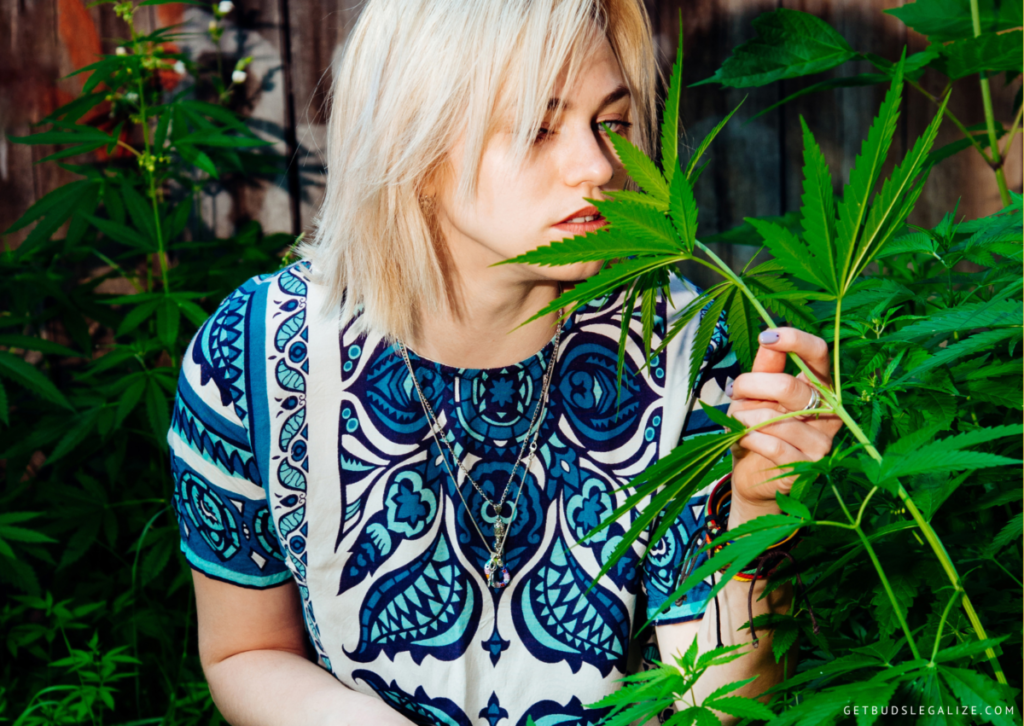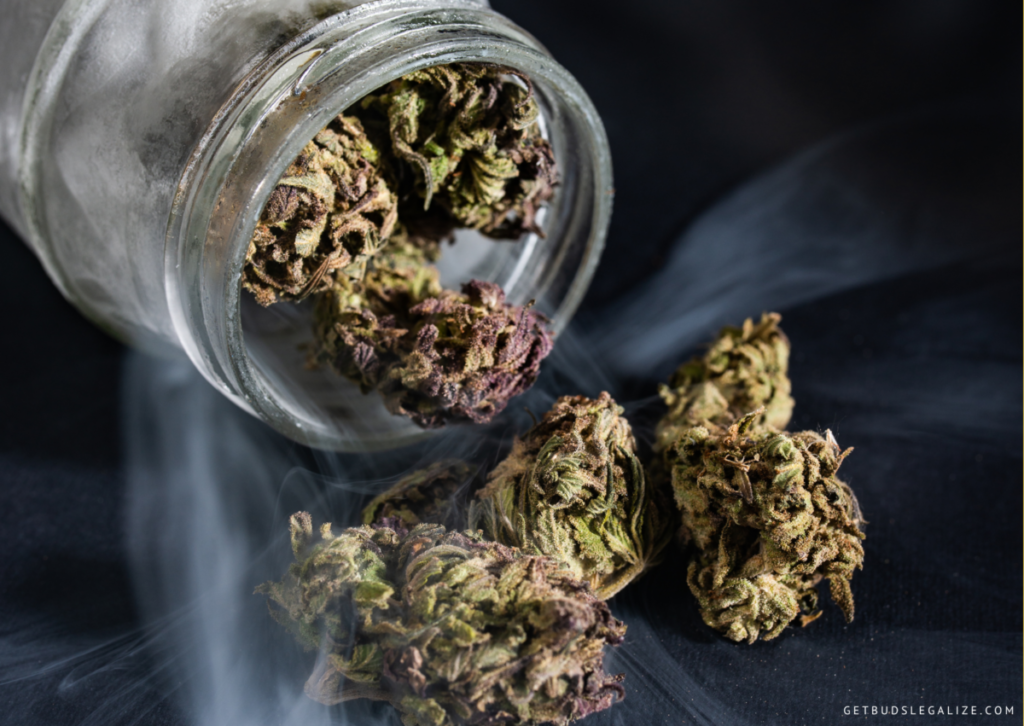Why Does Weed Smell Skunky? A Complete Guide to Cannabis Aromas



Why Does Weed Smell Skunky? A Complete Guide to Cannabis Aromas
If you have ever smelled cannabis, you probably noticed that it has a distinctive and pungent aroma. Some strains of weed smell more like skunks than others, but what is the reason behind this skunky smell? And how does it affect your health and enjoyment of cannabis? In this blog post, we will explore the science behind cannabis aromas and how they are influenced by various compounds in the plant.
What Is the Source of Weed’s Skunk Smell?
The main culprit behind the skunky smell of weed is a group of compounds called volatile sulfur compounds (VSCs). These are organic molecules that contain sulfur atoms and have a low boiling point, meaning they evaporate easily and release their odor into the air. VSCs are produced by many plants and animals as a defense mechanism against predators and pathogens. For example, skunks spray VSCs to ward off attackers, garlic and onions contain VSCs that make your breath smell bad, and rotten eggs are rich in VSCs that make them stink.
Cannabis plants produce VSCs as a result of their metabolism and stress response. When cannabis plants are exposed to heat, light, oxygen, or microbial infection, they break down some of their molecules and release VSCs as byproducts. Some of these VSCs are thiols, which are sulfur-containing alcohols that have a very strong and unpleasant smell. Thiols are responsible for the skunky odor of some cannabis strains, especially those that have a high concentration of THC, the main psychoactive compound in weed.
The Role of Other Compounds in Cannabis’ Aroma
While VSCs are the main source of the skunky smell of weed, they are not the only compounds that contribute to cannabis’ aroma. Cannabis plants also produce hundreds of other molecules that have different smells and effects. These include terpenes, flavonoids, esters, aldehydes, ketones, and more. Each cannabis strain has a unique profile of these compounds, which gives it a distinct flavor and aroma.
Terpenes are the most abundant and diverse group of compounds in cannabis. They are aromatic oils that are found in the resin glands (trichomes) of the plant. Terpenes are responsible for the citrusy, piney, earthy, spicy, floral, or fruity smells of different cannabis strains. Terpenes also have various effects on the body and mind, such as modulating mood, pain, inflammation, memory, appetite, and more.
Flavonoids are another group of compounds that influence cannabis’ aroma. They are pigments that give plants their color and protect them from UV rays and pests. Flavonoids also have antioxidant, anti-inflammatory, and neuroprotective properties. Some flavonoids are unique to cannabis, such as cannflavin A and B, which have anti-inflammatory effects that are 30 times stronger than aspirin.
Esters are another group of compounds that affect cannabis’ aroma. They are organic acids that react with alcohol to form fruity or floral smells. For example, ethyl butyrate is an ester that smells like pineapple, while geranyl acetate is an ester that smells like roses. Esters also have psychoactive effects on the brain, such as enhancing mood and creativity.


How Do Terpenes Interact With Other Compounds in Cannabis?

Terpenes do not only affect cannabis’ aroma by themselves. They also interact with other compounds in the plant to create new smells and effects. This phenomenon is known as the entourage effect or the synergy effect. It means that the whole is greater than the sum of its parts when it comes to cannabis.
For example, terpenes can interact with cannabinoids, which are the main active compounds in cannabis that bind to receptors in the brain and body. Terpenes can enhance or inhibit the effects of cannabinoids by changing their bioavailability or affinity to receptors. For instance, myrcene is a terpene that has a musky smell and can increase the sedative effects of THC by making it more permeable to the blood-brain barrier. On the other hand, limonene is a terpene that has a citrusy smell and can counteract the anxiety-inducing effects of THC by activating serotonin receptors.
Terpenes can also interact with each other to create new smells and effects. For example, linalool is a terpene that has a lavender smell and can reduce stress and anxiety by activating GABA receptors. However, when linalool is combined with pinene, another terpene that has a piney smell and can improve memory and alertness by inhibiting acetylcholinesterase enzyme, the resulting aroma is more complex and balanced than terpene alone.
How Does the Smell of Weed Affect Your Health and Enjoyment?
The smell of weed can have both positive and negative effects on your health and enjoyment of cannabis. Depending on the strain, the smell of weed can:
- Activate your senses: The smell of weed can alert your nose and brain to the presence of cannabis. This can trigger your endocannabinoid system (the system that regulates many bodily functions) and get you ready for the cannabis experience. The smell of weed can also evoke memories and feelings related to previous cannabis use.- Influence your mood: The smell of weed can affect how you feel by changing your brain chemistry. Some terpenes and VSCs can make you feel happy, relaxed, or euphoric by altering serotonin (the mood hormone), dopamine (the pleasure hormone), or endorphins (the natural painkillers).
- Benefit your health: The smell of weed can also have medicinal effects by interacting with your immune system (the system that fights off germs), your respiratory system (the system that helps you breathe), or your digestive system (the system that breaks down food). Some terpenes and VSCs can reduce inflammation (swelling), kill bacteria, fungi, or viruses, open up your airways, or stimulate your appetite.
On the other hand, the smell of marijuana can also cause some problems or inconveniences. For example, some people may be allergic or sensitive to certain compounds in cannabis smoke or vapor, such as VSCs or terpenes. This can cause symptoms such as sneezing, coughing, itching, or headaches. Some people may also find the smell of weed unpleasant or offensive because it reminds them of skunk spray or rotten eggs. This can affect their enjoyment or satisfaction with cannabis products.
Moreover, the marijuana smell can also attract unwanted attention or cause legal issues. For example, some neighbors may complain about the odor or report it to the authorities. Some employers may test their employees for drug use or fire them if they smell like weed. Some places may have strict laws or regulations regarding cannabis consumption or possession. This can put you at risk of fines, arrests, or imprisonment.


So How Can You Manage the Cannabis Odor If You Want to Keep Your Cannabis Consumption Discreet or Avoid Bothering Your Neighbors?

There are a few tips and tricks that can help you reduce or mask the cannabis smells, such as:
1• Choosing a Less Smelly Strain:Some strains have lower levels of VSCs and terpenes than others, which makes them less pungent and more subtle. For example, strains that have high levels of pinene, which has a piney and fresh smell, tend to be less skunky than strains that have high levels of myrcene or caryophyllene. You can also look for strains that have fruity or floral aromas, such as Blueberry, Strawberry Cough, or Lavender.
2• Using a Vaporizer Instead of Smoking:Vaporizing cannabis produces less odor than smoking because it heats up the plant material without burning it. This means that fewer VSCs and terpenes are released into the air and less smoke is produced. Vaporizing also preserves more of the flavor and potency of cannabis than smoking, which makes it a more efficient and enjoyable way to consume weed.
3• Using a Sploof or a Smoke Filter:A sploof is a homemade device that filters out the smell of weed smoke by passing it through a tube filled with activated charcoal, dryer sheets, or other odor-absorbing materials. You can make your own sploof by using an empty toilet paper roll or a plastic bottle with holes at the bottom. A smoke filter is a similar device that you can buy online or at a smoke shop that does the same thing as a sploof but more effectively.
4• Using an Air Purifier or an Odor Eliminator Spray:An air purifier is a device that cleans the air by removing particles, allergens, and odors from it. You can use an air purifier in your room or your car to get rid of the smell of weed smoke after you consume cannabis. An odor eliminator spray is a product that neutralizes or masks the smell of weed by spraying it in the air or on fabrics. You can use an odor-eliminator spray that has natural ingredients such as essential oils or baking soda to avoid harsh chemicals or artificial fragrances.
5• Storing Your Weed Properly:The smell of weed can also come from your stash if you don't store it properly. To keep your weed fresh and prevent it from smelling too much, you should store it in an airtight container such as a glass jar or a metal tin. You should also keep your weed away from heat, light, and moisture, which can degrade its quality and increase its odor.
Bottom LineWhether you love it or hate it, the skunky smell of weed is part of the cannabis culture and experience. It can help you identify different strains, appreciate their unique qualities, and enjoy their diverse effects. The next time you smell weed that smells skunky, you will know why it does so and what it means for your cannabis journey.
FAQs About Cannabis Aromas
How many terpenes are there in cannabis?
There are over 200 different terpenes that have been identified in cannabis so far, but only a few of them are present in significant amounts. Some of the most common are:
- Myrcene: This is the most abundant terpene in cannabis and it gives it a musky and earthy smell. It is also found in lemongrass, mangoes, and thyme. Myrcene can have sedative and relaxing effects, as well as anti-inflammatory and analgesic properties.- Limonene: This terpene gives cannabis a citrusy and fresh smell. It is also found in lemons, oranges, and peppermint. Limonene can have uplifting and energizing effects, as well as anti-depressant and anti-anxiety properties.
- Pinene: This terpene gives cannabis a piney and woody smell. It is also found in rosemary, pine needles, and basil. Pinene can have alerting and memory-enhancing effects, as well as anti-inflammatory and bronchodilator properties.
- Caryophyllene: This terpene gives cannabis a spicy and peppery smell. It is also found in cloves, black pepper, and cinnamon. Caryophyllene can have calming and soothing effects, as well as anti-inflammatory and analgesic properties.
- Linalool: This terpene gives cannabis a floral and sweet smell. It is also found in lavender, rose, and mint. Linalool can have relaxing and sedative effects, as well as anti-depressant and anti-convulsant properties.
How can I tell what terpenes are in my cannabis?
The best way to tell what terpenes are in your cannabis is to smell it before you consume it. You can also look at the color and shape of the buds, as different terpenes can affect the appearance of the plant.
For example, buds that are purple or blue tend to have more linalool or anthocyanins (pigments), while buds that are orange or yellow tend to have more limonene or carotenoids (pigments).
However, these indicators are not always reliable, as other factors such as genetics, growing conditions, harvesting methods, curing processes, and storage methods can also affect the terpene profile of your cannabis.
Another way to tell what terpenes are in your cannabis is to look at the lab test results if they are available. Lab tests can measure the percentage of each terpene in your cannabis sample and give you a more accurate picture of its composition.
How do I choose the right cannabis strain for me based on its aroma?
There is no definitive answer to this question, as different people may prefer different aromas and effects from their cannabis. However, some general guidelines are:
- If you want a relaxing and soothing experience, look for strains that have high levels of myrcene or linalool.- If you want an uplifting and energizing experience, look for strains that have high levels of limonene or pinene.
- If you want a balanced and moderate experience, look for strains that have high levels of caryophyllene or humulene.
Of course, these are not the only factors that determine how your cannabis will affect you.
https://getbudslegalize.com/why-does-weed-smell-skunky/
Commenti
Posta un commento